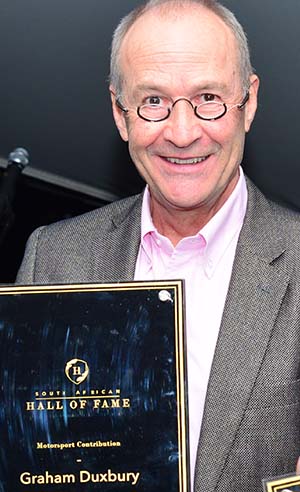Only a few motorcycle champions have been able to adapt their skills and innate bravery to master the art of car racing. Fewer still have been able to climb to the pinnacle of global motorsport – Formula One.

Graham Duxbury
By Graham Duxbury
For example, Alberto Ascari, who would become the F1 World Champion with Ferrari in 1952 and 1953, regularly competed in bike races in the 1930s.
Similarly, Jean Behra began his racing career on two wheels before driving for the Gordini, Maserati, BRM, Ferrari and Porsche teams in F1.
And Jean Pierre Beltoise won 11 French national motorcycle titles before transitioning to cars. He competed in 88 GPs and stood on several podiums during his F1 career.
Transitioning from motorcycle to car racing is not a common path. Peter Collins, former Team Lotus boss and an acknowledged talent spotter, says the “natural” racers quickly develop an understanding of what needs to be achieved behind the wheel from what has been learned from the dynamics of a racing motorcycle.
John Surtees is a racer with the natural capacity to learn and quickly adapt. Having won three 350cc world championship crowns and four 500cc world titles – in 1956, 1958, 1959 and 1960 – he made an immediate impact in F1.
In a Lotus Surtees claimed a second-place finish in only his second World Championship race – the 1960 British GP.
In 1963, Surtees was offered a works Ferrari F1 drive and went on to win that season’s German GP as well as the Rand GP at Kyalami. The following year, still with Ferrari, Surtees scored five GP victories, taking the ‘64 F1 World Championship title.
To date, Surtees remains the only racer to have won a world championship on both two wheels and four.
Motorcycle racing legend Mike Hailwood followed in Surtees’ wheel tracks. A nine-time world champion, he won 76 GPs during his stellar motorcycle racing career, including 14 Isle of Man TT victories and four consecutive 500 cc world championship titles.
In the 1960s, Mike began to dabble in car racing and by the end of the decade his four-wheel focus had sharpened. He finished third in the 1969 Le Mans 24-Hour race driving a Ford GT40 and was crowned the 1972 European F2 champion driving a car designed by Surtees. He competed in 50 F1 GPs, recording two podium places.
At the 1973 SA GP at Kyalami, Mike famously and heroically rescued Clay Regazzoni from his burning BRM. This demonstration of bravery earned Mike the George Medal, Britain’s second-highest civilian gallantry honour.
Surprisingly, after retiring from F1 following an accident at the 1974 German GP and after an 11-year hiatus from mainstream motorcycling, Hailwood made a comeback at the 1978 Isle of Man TT, sensationally winning on a Ducati 900SS.
Perhaps fittingly, he raced in the “Formula One” class, a then-new World Championship category based on large-capacity road machines.
When it comes to bravery, Patrick Depailler has proven his mettle. He made his race debut on a borrowed 500cc Manx Norton on a wet Monthléry circuit. Despite treacherous conditions, he finished second. He then took this machine to a French national championship title in 1963.
Depailler was a huge fan of dangerous sports and was a keen skier, scuba diver and fan of high-powered motorcycles.
Jody Scheckter’s championship-winning year – 1979 – was also one of Patrick’s best seasons. He took victory in the Spanish GP, which put him level in the championship chase. However, his season ended abruptly when he crashed his hang-glider into a mountainside and broke both of his legs.
Finally, one of the more successful biker-turned-racers of the recent generation is Damon Hill. His story is unusual as he went motorcycle racing because he wanted to show he was different from his father, the late double F1 world champion, Graham Hill.
“I wanted to do my own thing,” says Damon. “So I started racing ‘bikes. It was slow learning process but I was competitive in the end.”
Damon switched to cars at the behest of his mother who was concerned about the dangers of racing motorcycles. On four wheels, he progressed through the lower ranks to graduate as a Williams development driver. After securing a full-time race seat, he won the F1 World Championship title in 1996, emulating his famous father.
